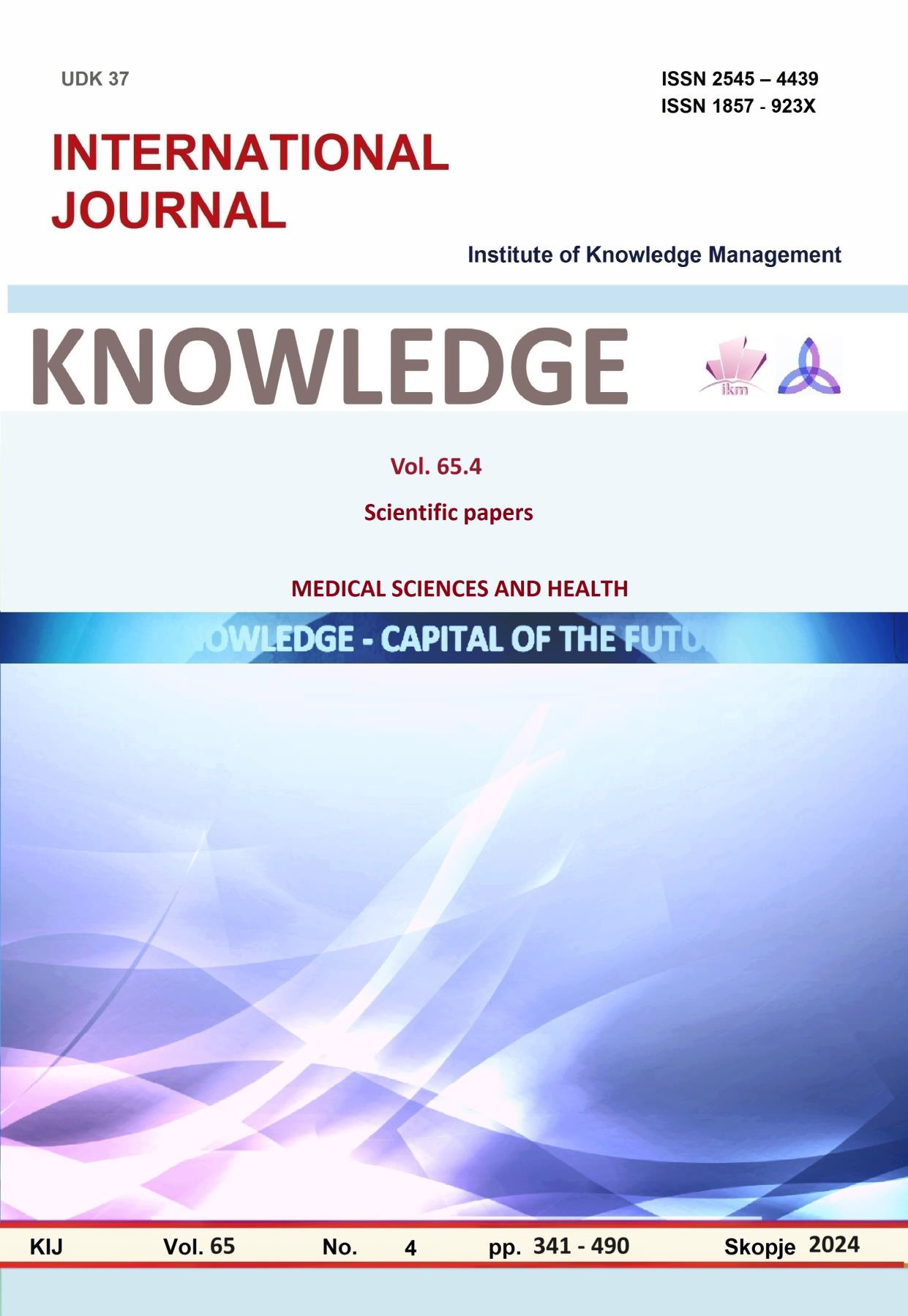ГНАТОМЕТРИСКА АНАЛИЗА КАЈ ПАЦИЕНТИ СО ИМПАКТИРАНИ МАКСИЛАРНИ КАНИНИ
GNATHOMETRIC ANALYSIS IN PATIENTS WITH IMPACTED MAXILLARY CANINES
Author(s): Jeta Bedzeti, Cena Dimova, Natasha Tosheska Spasova, Armend Redzepi, Tatjana Georgievska JancheskaSubject(s): Social Sciences, Health and medicine and law
Published by: Scientific Institute of Management and Knowledge
Keywords: Impacted maxillary canines;tooth dimensions;jaw dimensions
Summary/Abstract: Impaction is a pathological condition defined as the failure of a tooth to erupt into the oral cavity within the time and physiological limits of the normal eruptive process. Objective: To determine the dimensions of the teeth and the dimensions of the dental arches in patients with impaction of the maxillary canines. Material and method: Orthodontic study models from 60 male and female subjects aged 11 to 18 years with unilateral and bilateral impaction of maxillary canines were examined. The control group for gnathometric analysis consisted of 60 subjects with normally erupted maxillary canines of the same age. The following parameters were analyzed: mesiodistal tooth width, inter-premolar width, inter-molar width, and height of the maxillary dental arch. Results: Among the patients in the study group (SG), 36.7% had an impacted maxillary canine 13, and 21.7% had an impacted maxillary canine 23. Bilateral impaction of maxillary canines 13 and 23 was present in 41.7%. Unilateral impaction of maxillary canines was recorded in 58.4% of the study group. A significant association was found between bilateral/unilateral impaction versus buccal/palatal impaction for p<.05 (Pearson Chi-square: 10.8225, p=.001003). In terms of gender distribution in the study group, males comprised 33.3% and females 66.7%, with the percentage difference being significant for p<.05 (Difference test, p=.0003). The average age of patients in the study group was 14.3±2.3 years, and in the control group was 14.2±2.3 years, with the difference in average values being insignificant for p>.05. The average age of patients with unilateral impaction was 15.2±2.2 years, and the average age of patients with bilateral impaction was 13.1±1.9 years. A significant difference was confirmed between the average age of subjects with unilateral and bilateral impaction (Mann-Whitney U Test, p=0.007947). The difference registered between the groups for mesiodistal tooth width on the models according to the Mann-Whitney U Test was significant for p<.05 between 16 (10.3 vs.10.0) (p=.036009), 13 (8.2 vs.7.7) (p=.000433), 21 (8.7 vs.8.4) (p=.049041), and 23 (8.2 vs.7.6) (p=.000025). The overall average value of the models in the study group for mesiodistal width was 93.8±5.4, while the total value in the control group was lower at 91.4±4.6. The difference registered between the average values of mesiodistal width in both groups was significant for p<.05 (Mann-Whitney U Test, p=.010194). The average values of inter-premolar width (anterior width) of the jaw in the study group were 34.8±3.3, while in the control group, the average value was higher at 36.3±2.8. The difference between the average values of anterior width was significant for p<.05 (Mann-Whitney U Test, p=.007036). The average values of inter-molar width (posterior width) of the jaw in the study group were 46.4±3.5, while in the control group, the average value was 46.8±3.4. The difference between the average values of posterior width was not significant for p>.05 (Mann-Whitney U Test, p=.435731). The average height of the maxillary dental arch was 26.5±2.5 in the study group, while in the control group, it was higher at 27.8±2.9. The difference between the average values of the height of the maxillary dental arch in both groups was significant for p<.05 (Mann-Whitney U Test, p=.002253). Conclusion: There is a significant association between bilateral/unilateral impaction in relation to the side of buccal/palatal impaction position. There is no significant association between bilateral/unilateral impaction in relation to gender. Female patients are twice as likely to develop impacted maxillary canines compared to male patients. The average age of patients with unilateral impaction is 15.2±2.2 years, while the average age of patients with bilateral impaction is 13.1±1.9 years. There is a significant difference in the mesiodistal dimensions of teeth 16, 13, 21, and 23 between the two groups studied. The total sum of mesiodistal dimensions of the teeth is greater in patients with impacted maxillary canines. The anterior width of the maxilla is significantly smaller in patients with impaction. There is no significant difference in the posterior width of the maxillary dental arch between the two groups. There is a significant difference in the height of the maxillary dental arch between the two groups, with a lower height in patients with impacted maxillary canines.
Journal: Knowledge - International Journal
- Issue Year: 65/2024
- Issue No: 4
- Page Range: 371-379
- Page Count: 9
- Language: English

